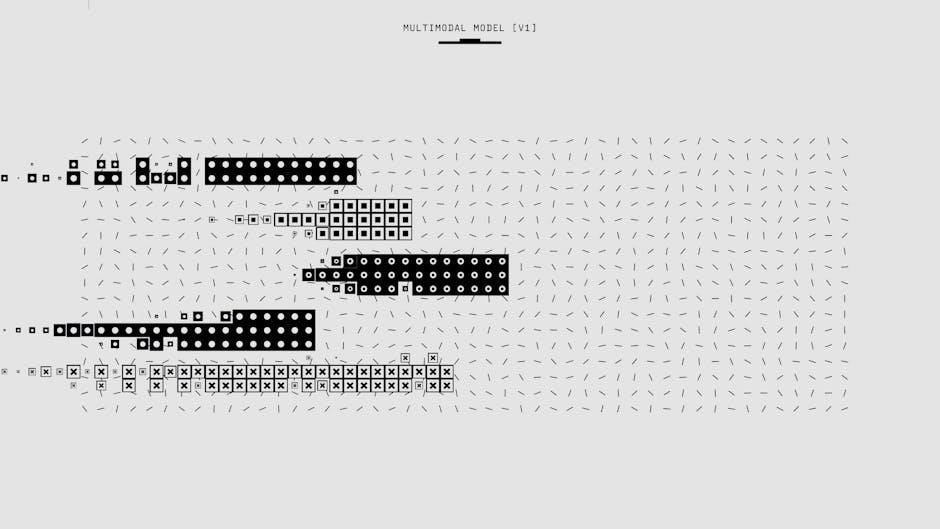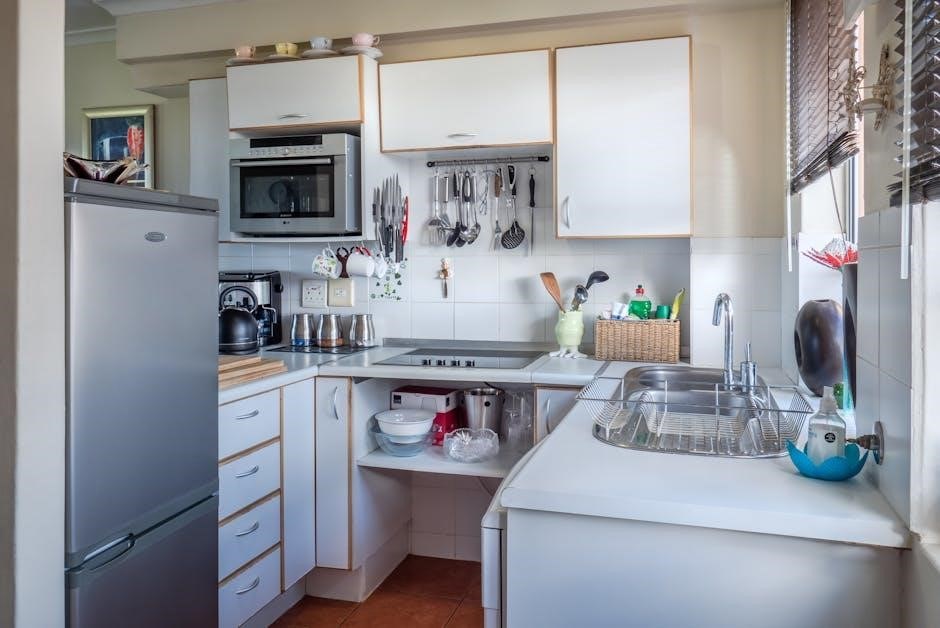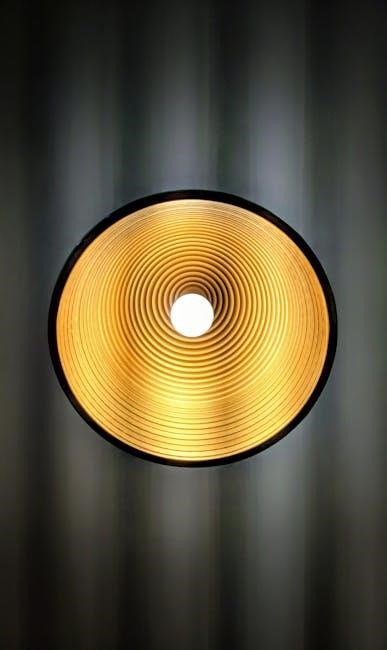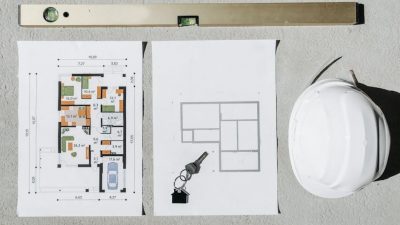A Whirlpool refrigerator wiring diagram is a detailed guide illustrating the electrical connections and components within your appliance. It provides a clear visual representation of circuits, helping users understand the wiring layout for troubleshooting, repairs, and installation. These diagrams are essential for diagnosing issues, ensuring safety, and maintaining optimal performance. They are particularly useful for technicians and DIY enthusiasts seeking to resolve electrical problems efficiently.
What is a Whirlpool Refrigerator Wiring Diagram?
A Whirlpool refrigerator wiring diagram is a visual guide that illustrates the electrical connections, components, and circuits within the appliance. It provides a detailed blueprint of how the refrigerator’s electrical system is structured, including wires, connectors, and control modules. This diagram is essential for understanding the flow of electricity, identifying components, and diagnosing issues. It typically includes symbols, labels, and color coding to represent different wires and their functions. Whether you’re a professional technician or a DIY enthusiast, the wiring diagram serves as a critical resource for repairs, installations, and troubleshooting electrical problems in your Whirlpool refrigerator.
Importance of Using a Wiring Diagram for Repairs
A wiring diagram is an essential tool for repairing a Whirlpool refrigerator, as it provides a clear and detailed map of the electrical system. It helps identify components, understand their connections, and trace circuits, making it easier to diagnose and fix issues. Without a diagram, repairs can be time-consuming and risky, as guessing wire connections can lead to further damage or safety hazards. A wiring diagram ensures accuracy, minimizes guesswork, and helps avoid costly mistakes. It also serves as a reference for understanding how the appliance’s electrical system operates, making it indispensable for both professional technicians and DIY enthusiasts.

Safety Precautions When Working with Appliance Wiring
Always disconnect power before starting repairs. Use a multimeter to ensure no voltage is present. Wear insulated tools and avoid wet conditions to prevent shocks. Keep the area clear of flammable materials and follow the wiring diagram instructions carefully to avoid accidents.
General Safety Guidelines for Electrical Repairs
Always disconnect the refrigerator from the power source before starting any repair. Verify the power is off using a multimeter to ensure safety. Wear insulated gloves and use tools with non-conductive handles to prevent electric shocks. Avoid working in damp conditions, as moisture increases the risk of electrical hazards. Keep loose clothing and long hair tied back to prevent accidental contact with wires. Ensure the work area is well-lit to maintain clear visibility. Never attempt repairs without consulting the wiring diagram for your specific Whirlpool model. If unsure, seek professional assistance to avoid risks. Proper preparation and caution are essential for safe electrical repairs.
Specific Safety Tips for Whirlpool Refrigerators
When working on a Whirlpool refrigerator, always locate and disconnect the specific model’s power supply as indicated in the wiring diagram. Wear protective eyewear and ensure the refrigerator is stable to prevent tipping. For models with ice makers or water dispensers, shut off the water supply before starting repairs. Be cautious of sharp edges and moving parts, such as the compressor or fan blades. Whirlpool refrigerators often have advanced sensors and electronic controls, so avoid touching sensitive components to prevent damage. Use a multimeter to verify no voltage is present at the circuit before handling wires. Refer to the wiring diagram to identify high-voltage components like the compressor or defrost heater. Always unplug the refrigerator and allow capacitors to discharge naturally to avoid electric shock. Familiarize yourself with Whirlpool-specific safety features, such as thermal protectors, to ensure safe repairs.

Understanding the Components of a Whirlpool Refrigerator
A Whirlpool refrigerator’s electrical system includes a compressor, condenser, evaporator, thermostat, sensors, and control modules. These components work together to regulate temperature and ensure efficient operation.
Major Electrical Components in a Whirlpool Refrigerator
A Whirlpool refrigerator contains several key electrical components, including the compressor, condenser, evaporator, and control modules. The compressor drives the refrigeration cycle, while the condenser and evaporator manage heat exchange. Control modules, such as the main control board and inverter, regulate operations like cooling and defrosting. Additional components include sensors (e.g., temperature and door switches) and the user interface (e.g., touch panels or buttons). These parts are interconnected through wiring, which is detailed in the wiring diagram. Understanding these components is essential for diagnosing and repairing electrical issues, as they form the backbone of the refrigerator’s functionality and efficiency.
Identifying Wires and Connectors in the Diagram
In a Whirlpool refrigerator wiring diagram, wires are typically color-coded or labeled to indicate their function. For example, black wires often represent power lines, while white or gray wires may signify ground or neutral connections. Red or yellow wires could be used for control circuits or sensors. Connectors are also clearly marked, with labels corresponding to specific components like the compressor or fan motor. The diagram may include a legend to decode symbols and abbreviations. Properly identifying these elements ensures accurate repairs and minimizes risks of short circuits or component damage. Always cross-reference the diagram with the physical layout of your refrigerator for precise connections.

How to Read a Whirlpool Refrigerator Wiring Diagram
Start by locating the legend to understand symbols and abbreviations. Trace circuits step-by-step, identifying components like switches, sensors, and motors. Use color-coded wires to track connections accurately.
Key Symbols and Notations Used in Wiring Diagrams
Whirlpool refrigerator wiring diagrams use standardized symbols to represent components. Common symbols include wires (lines), connectors (circles or squares), and components like switches (open/close circles) or compressors (rectangles). Colors differentiate wire types: black for hot, white for neutral, and copper for ground. Abbreviations like C (compressor) or F (fan) label parts. Arrows indicate flow direction, while dashed lines show connections inside components. Symbols for sensors (thermistors, capacitors) and circuits (parallel/series) are also included. Understanding these symbols is crucial for accurate repairs. Always refer to the diagram’s legend for specific meanings, ensuring safe and precise troubleshooting.
Understanding Circuit Pathways and Connections
Whirlpool refrigerator wiring diagrams illustrate the flow of electricity through the appliance. Circuit pathways show how power travels from the inlet to various components, such as compressors, fans, and sensors. Connections are depicted by lines linking symbols, indicating how parts interact. For example, a compressor circuit may include a start relay and capacitor, while a defrost circuit involves a timer and heating element. Color coding helps trace live, neutral, and ground wires. Understanding these pathways aids in identifying where power is interrupted or where faults occur. Always trace circuits methodically, checking connectors and components for breaks or short circuits.

Common Issues Identified Through Wiring Diagrams
Wiring diagrams help identify issues like faulty defrost timers, compressor start relays, or sensor connections. They reveal high current draws or short circuits in the system.
Diagnosing Faulty Wires or Connections
Diagnosing faulty wires or connections in a Whirlpool refrigerator involves using the wiring diagram to trace circuits and identify potential issues. Begin by inspecting the diagram to locate key components like the compressor, defrost timer, and temperature sensors. Look for signs of wear, fraying, or corrosion in wires, which can cause malfunctions. Use a multimeter to test continuity and voltage levels, ensuring all connections are secure. Common faults include loose terminals, short circuits, or open circuits. Referencing the diagram helps pinpoint where these faults might occur, such as in the defrost heater wiring or compressor start relay. Always unplug the refrigerator before starting repairs to ensure safety.
Identifying Common Electrical Problems
Identifying common electrical problems in a Whirlpool refrigerator often starts with symptoms like the fridge not cooling, erratic operation, or error codes. The wiring diagram helps pinpoint issues such as faulty thermostats, defective compressors, or malfunctioning sensors. Look for signs like blown fuses, tripped breakers, or loose connections. Use the diagram to trace power supply lines and verify if components like the defrost heater or fan motors are functioning. Common issues include failed relays, shorted wires, or corroded connectors. Always refer to the diagram to isolate the problem area before attempting repairs, ensuring a systematic approach to resolving electrical faults efficiently and safely.

Tools and Materials Needed for Electrical Repairs
Essential tools include a multimeter, wire strippers, screwdrivers, pliers, and safety gear like gloves and goggles. Materials may involve replacement wires, connectors, and fuses.
Essential Tools for Working with Wiring Diagrams
When working with a Whirlpool refrigerator wiring diagram, essential tools include a multimeter for voltage and resistance testing, wire strippers for preparing wires, and pliers for bending or gripping. A set of screwdrivers (both flathead and Phillips) is necessary for accessing internal components. Safety equipment like insulated gloves and goggles should always be worn. Additionally, a wire connector kit and electrical tape are useful for secure connections. A torch or flashlight can help illuminate dark spaces inside the appliance. Ensure all tools are rated for electrical work to prevent damage or injury. Refer to the wiring diagram to identify which tools are needed for specific tasks.
Recommended Materials for Safe Repairs
For safe and effective repairs using a Whirlpool refrigerator wiring diagram, essential materials include high-quality wire nuts, heat-resistant tubing, and electrical connectors. Insulated tools, such as screwdrivers and pliers, are crucial to prevent shocks. Thermal insulation materials can protect against heat damage. A circuit breaker or fuse kit ensures overcurrent protection. Electrical tape and fire-resistant sleeving are vital for secure wire connections. Additionally, safety gear like insulated gloves and goggles should always be on hand. These materials help prevent accidents and ensure durable, reliable repairs. Consult the wiring diagram to identify specific materials needed for your repair task to maintain safety and efficiency.
Troubleshooting Techniques Using Wiring Diagrams
Identify the issue, such as cooling problems or unusual noises. Use the wiring diagram to locate relevant components and trace wiring connections. Employ a multimeter to test for continuity and voltage. Always disconnect power before starting repairs to ensure safety. Check for blown fuses or tripped circuit breakers. Understand component interactions to isolate the fault. Consult additional resources or forums for common issues and solutions. Use appropriate tools to avoid damaging the appliance. Proceed methodically to diagnose and repair effectively, prioritizing safety throughout the process.
Step-by-Step Troubleshooting Guide
Start by identifying the symptom, such as the refrigerator not cooling or making unusual noises. Refer to the wiring diagram to locate the relevant electrical components. Turn off the power supply and unplug the appliance for safety. Use a multimeter to test wires for continuity and voltage. Check for blown fuses or tripped circuit breakers in the electrical panel. Inspect connectors and terminals for damage or corrosion. Trace the circuit pathways in the wiring diagram to isolate the faulty component. Replace any damaged wires or defective parts with compatible replacements. Reassemble the connections and restore power. Test the appliance to ensure the issue is resolved. Document findings for future reference.
Case Studies of Common Repairs
A common repair involves a refrigerator that stops cooling due to a faulty defrost timer. Using the wiring diagram, technicians trace the timer circuit and identify a broken connection. Replacing the timer restores proper defrost cycles. Another case is a malfunctioning ice maker, where the diagram helps locate a defective water valve solenoid. Testing the solenoid’s continuity confirms the issue, and replacing it resolves the problem. Additionally, a fridge with intermittent lighting issues can be diagnosed by checking the door switch circuit. The wiring diagram guides technicians to test the switch’s continuity, leading to its replacement. These case studies highlight how wiring diagrams streamline repairs and minimize downtime.

Relevance of Wiring Diagrams for Maintenance
Wiring diagrams are crucial for understanding component connections and enabling quick issue identification. They prevent major breakdowns by guiding regular checks and ensuring safe, efficient repairs during maintenance routines.
Regular Maintenance Checks Using Wiring Diagrams
Regular maintenance checks using wiring diagrams ensure your Whirlpool refrigerator operates efficiently and safely. These diagrams help visualize electrical pathways, allowing you to identify potential issues before they escalate. By referencing the wiring diagram, you can inspect connectors, wires, and components for wear or damage. This proactive approach prevents unexpected breakdowns and extends appliance lifespan. Schedule periodic inspections to verify secure connections and proper circuit functionality. Addressing minor faults early reduces repair costs and downtime. Use the wiring diagram to locate and test critical components like sensors, relays, and compressors. This systematic maintenance ensures optimal performance, energy efficiency, and safety, aligning with manufacturer recommendations for longevity and reliability.
Preventative Measures to Avoid Electrical Issues
Preventative measures using wiring diagrams can significantly reduce the risk of electrical issues in your Whirlpool refrigerator. Start by scheduling regular inspections of wires, connectors, and components, ensuring they are free from damage or corrosion. Tighten loose connections to prevent arcing or short circuits. Avoid overloading circuits, as this can strain the electrical system. Use surge protectors to safeguard against voltage spikes. Keep the wiring area clean and dry to prevent moisture-related issues. Finally, always adhere to the manufacturer’s guidelines for electrical repairs and maintenance. These proactive steps, guided by the wiring diagram, help maintain safety and efficiency, preventing costly repairs and ensuring reliable operation.

Advanced Topics in Whirlpool Refrigerator Wiring
Modern Whirlpool refrigerators feature complex wiring with advanced components like microprocessors and sensors. These enhance functionality and efficiency, reducing electrical issues when repairs follow the wiring diagram.
Understanding Advanced Circuitry in Modern Models
Modern Whirlpool refrigerators incorporate advanced circuitry, including adaptive defrost controls, multi-zone temperature management, and smart sensors. These systems optimize performance and energy efficiency. The wiring diagram PDF highlights complex pathways, such as electronic control boards and high-tech compressors. Understanding these circuits requires familiarity with cutting-edge components like touchscreens and Wi-Fi modules. Advanced models also feature fail-safes, like overcurrent protection and thermal cutoffs, ensuring safety. The diagram helps technicians identify and troubleshoot issues in these sophisticated systems, making repairs more efficient. Always consult the official Whirlpool wiring diagram PDF for precise guidance on handling advanced circuitry in newer models.
Integration with Smart Home Systems
Modern Whirlpool refrigerators often integrate with smart home systems, enabling voice control, remote monitoring, and automated diagnostics. The wiring diagram PDF highlights the specific connections required for smart features like Wi-Fi modules and sensors. These systems allow users to adjust settings, receive notifications, and even perform diagnostics via smartphone apps. For seamless integration, the diagram outlines compatibility with popular smart home platforms such as Alexa and Google Home. It also provides guidelines for installing and configuring these advanced features. By following the wiring diagram, users can ensure their refrigerator operates efficiently within a connected home ecosystem, enhancing convenience and smart living experiences.

Resources for Whirlpool Refrigerator Wiring Diagrams
Official Whirlpool websites and authorized dealers provide detailed wiring diagrams in PDF format for specific refrigerator models. Additionally, third-party forums and appliance repair websites offer downloadable resources.
Official Whirlpool Resources and Manuals
Whirlpool provides official wiring diagrams and repair manuals for their refrigerators through their website and authorized dealers. These resources are typically available in PDF format, ensuring easy access and readability. By visiting the official Whirlpool website, users can search for their specific refrigerator model to download the corresponding wiring diagram. Additionally, service manuals and installation guides are often included, offering detailed schematics and repair instructions. These official documents are essential for accurate diagnoses and repairs, as they are tailored to the exact specifications of Whirlpool appliances. Always refer to these official sources to ensure reliability and safety during electrical work.
Third-Party Websites and Forums
Beyond official sources, third-party websites and forums often provide Whirlpool refrigerator wiring diagrams in PDF format. Platforms like Reddit, appliance repair forums, and DIY communities frequently share user-contributed diagrams and repair guides. These resources can be invaluable for troubleshooting or when official manuals are unavailable. However, exercise caution, as third-party content may lack accuracy or be outdated. Always cross-reference diagrams with official Whirlpool documentation to ensure reliability. Forums also offer discussions and advice from experienced technicians and DIYers, which can provide additional insights and solutions for specific issues. Use these resources wisely, balancing convenience with the need for verified information.
Whirlpool refrigerator wiring diagrams are essential for safe, effective repairs. They empower DIYers and technicians to troubleshoot and fix issues confidently, ensuring optimal appliance performance and longevity.
Summarizing the Importance of Wiring Diagrams
Whirlpool refrigerator wiring diagrams are crucial for understanding and repairing electrical systems. They provide a clear visual representation of connections, ensuring safe and accurate troubleshooting. By using these diagrams, technicians and DIYers can identify faults efficiently, reducing the risk of electrical hazards. Wiring diagrams also help in ordering the correct replacement parts and guide systematic repairs. Regular reference to these diagrams promotes long-term appliance reliability and performance. They are indispensable for maintaining safety standards and preventing costly damages. Essentially, wiring diagrams empower users to address issues confidently, making them a vital resource for any Whirlpool refrigerator repair or maintenance task.
Encouragement for Safe and Effective Repairs
Embracing the use of Whirlpool refrigerator wiring diagrams ensures safe and effective repairs. These diagrams are designed to guide you through complex electrical systems with clarity. Always prioritize safety by disconnecting power before starting work. Using the correct tools and adhering to the diagram’s instructions reduces the risk of errors. Properly diagnosing and addressing issues prolongs your appliance’s lifespan. Regular maintenance and timely repairs prevent unexpected breakdowns. By following the wiring diagram, you can confidently tackle repairs, ensuring your Whirlpool refrigerator operates efficiently for years. Remember, safety and precision are key to successful DIY or professional repairs.

Frequently Asked Questions (FAQs)
Common questions include locating the wiring diagram PDF, understanding symbols, and troubleshooting techniques. Whirlpool’s official website and user manuals are reliable sources for these resources.
Common Questions About Wiring Diagrams
Users often ask about interpreting symbols, locating specific components, and understanding circuit connections. Others inquire about troubleshooting techniques and compatibility with different Whirlpool models. Many seek advice on identifying faulty wires or connections and how to safely repair them. Additionally, questions arise about accessing official PDF diagrams and ensuring compliance with safety standards. Some also wonder about the differences between wiring diagrams for older versus newer models. These inquiries highlight the importance of clear, detailed diagrams and proper training for DIY enthusiasts. Always refer to official Whirlpool resources for accurate and model-specific guidance to avoid errors and ensure safety during repairs.
Additional Tips for DIY Enthusiasts
For DIY enthusiasts working with Whirlpool refrigerator wiring diagrams, it’s essential to use the correct tools and follow safety protocols. Always disconnect power before starting repairs to avoid electrical shocks; Use a multimeter to test circuits and ensure wires are properly insulated. Label wires as you disconnect them to simplify reassembly. Refer to the official Whirlpool PDF manual for model-specific guidance, as diagrams may vary. Take photos of connections before disassembling to aid reinstallation. Avoid guessing wire connections, as this can lead to malfunctions. Practice patience and methodically trace circuits to identify issues. Keep spare parts on hand, and consider consulting online forums for additional insights. Safety and precision are key to successful DIY repairs.









